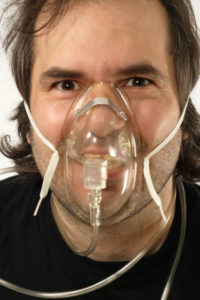
This exercise will help you learn a new way to calm down and control your nervous, stressed, and anxious feelings and help eliminate some of the tension from your body.
Deep breathing gets oxygen to your body and slows you down. This helps to calm you down and put you in a position where you can think. Research has sown that this exercise can have dramatic effects in helping people calm down and release tension. When you learn to control your breathing, you’ll find that it is much easier to control your emotions. It’s also something you can do anytime and anywhere.
Researchers have proven that deep breathing is extremely effective at releasing the tension in your body when you feel your anger rising and your physical cues start to kick in (usually around a 5 or a 6).
Most of the time when you are stressed you breathe short, fast, shallow breaths from your chest. This increases your pulse and the tension in your body and makes it harder to control your emotions. The point of controlled breathing is to do the opposite: slow everything down with long, slow, deep breaths.
How to do it
To start the exercise, get in a comfortable seated position. Sit in a chair in a way that seems relaxing to you. Now, put your left hand directly above your navel, and your right hand on your chest.
Now concentrate on your breathing. When you breathe in, the hand on your stomach should move up and out, and when you breathe out it should move down. The hand on your chest should stay still and not move the whole time. If you can move our stomach without moving your chest that means you are breathing correctly.
Once you have the form down, try this simple exercise. It is called breathing by fours. You breathe in for four counts, hold for four counts, out for four counts, and then rest for four counts.
Once you have this new method down, add another element to keep your thoughts and mind calm as you are breathing. Keep breathing like you are, but each time you breathe out, say the ‘Calm’ to yourself. Concentrate on the word calm. If you have other thoughts pop into your head besides ‘calm,’ try to picture them floating away with your breath as you exhale. Only focus on the word calm.
Continue to practice controlled breathing: breathing out moving your stomach, counting to four, and focusing on the world “calm.” Practice this exercise every morning when you wake up and every night before you go to sleep for at least five minutes. Practice when you are not upset, so that you will know what to do and it will come naturally to you when you do become upset.
Excerpt take from “Take Control of Your Anger: A Step-by-Step Guide to Anger Management by Michael Ballard, MA, NCC, LPC
